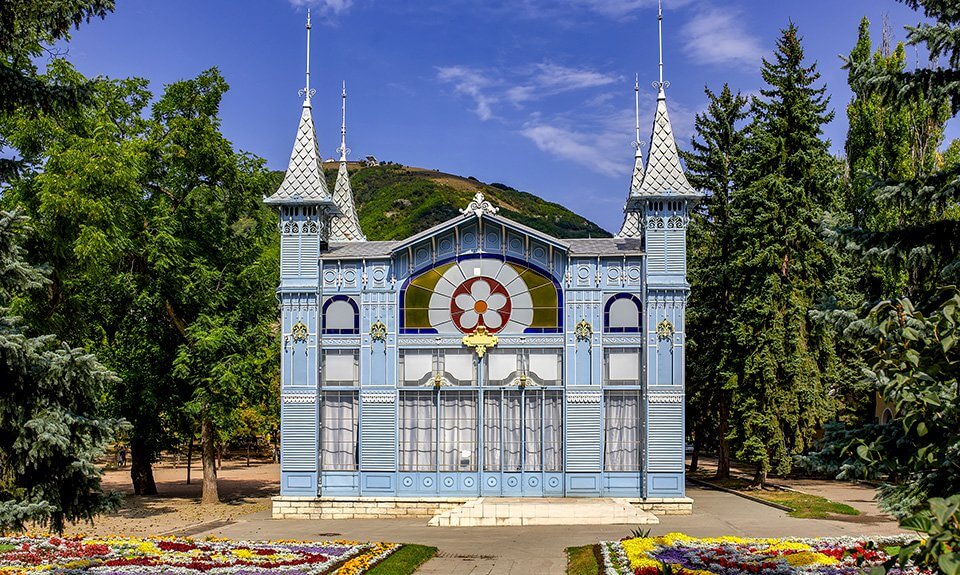Kavminvody is the best place to study the history of resort architecture

The resort cities of Kavminvod`s region are rich in monuments of a special culture, which reached its heyday at the turn of the XIX-XX centuries. Already in the 1820s, «Kislye» (that means «Sour»), «Zheleznye» (that means «Iron») and «Goryachie» (that means «Hot») waters began to actively develop thanks to the efforts of General Alexei Ermolov. On his initiative, architects Giovanni and Giuseppe Bernardazzi arrive here. The real resort boom begins at the end of the century, especially after a regular railway connection with Central Russia was developed.
The main attractions of Kislovodsk are concentrated on Kurortny Boulevard and near it. These are the main narzan baths (1904) in the moorish style, with lion capitals and plant-animal ornaments on ceramic panels. Further – a magnificent building in the neo-gothic style – the Narzan Gallery (1853, architect Samuel Upton). Turning off the boulevard, you can reach the resort concert hall – now there is the Philharmonic, where Fyodor Chaliapin sang. The boulevard ends with a solemn colonnade, after it the park begins. You can also go through it to the museum of local lore, located in the fortress, built at the end of the 19th century. Not far from it there is the museum-estate of the wandering artist Nikolai Yaroshenko – one of the most famous residents of Kislovodsk.
The main attraction of Essentuki is the majestic Mud Hospital named after Semashko, built more than 100 years ago. Many interior items have survived to this day:


furniture, chandeliers, doors with crystal inserts in recreation halls. Unique stained glass windows of Mud baths create the effect of a warm, sunny atmosphere in any weather. The mud bath is still functioning. Anyone can get mud procedures in it.
In Pyatigorsk, the mandatory program usually includes “Lermontov’s House,”, a duel place, a climb to Mashuk Mountain and a hydrogen sulfide lake in an underground cave with lake Proval, that was glorified in “Twelve Chairs.” (popular soviet movie).
In Zheleznovodsk, the most memorable are the bizarre eastern forms of Dachi Emir of Bukhara (1912) and the Pushkin Gallery – an elegant dance and summer performances building made of glass and metal.
Source: cultural and educational publication The Art Newspaper Russia




